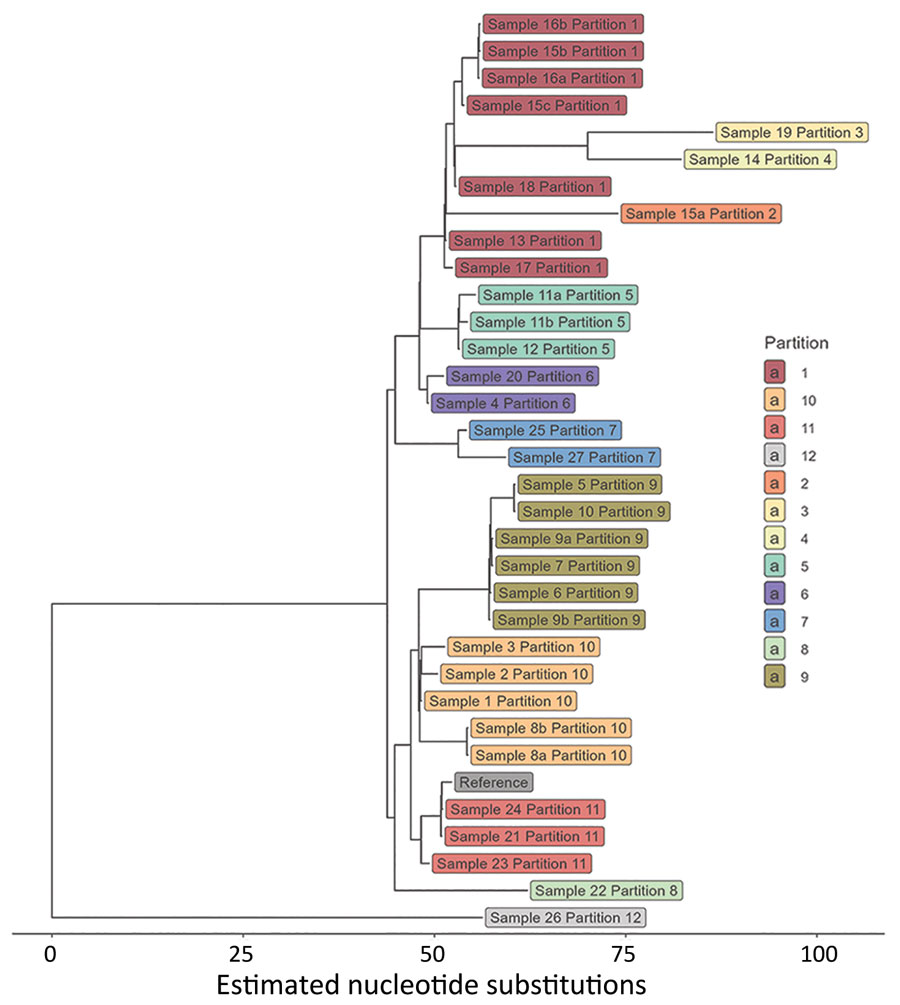Volume 31, Supplement—May 2025
SUPPLEMENT ISSUE
Supplement
Integrating Genomic Data into Public Health Surveillance for Multidrug-Resistant Organisms, Washington, USA
Figure 6

Figure 6. Maximum-likelihood phylogenetic tree showing partitions of 33 carbapenemase-producing Acinetobacter baumannii isolates with the OXA-235–like carbapenemase gene as part of study of integrating genomic data into public health surveillance for multidrug-resistant organisms, Washington, USA. Colors indicate 12 partitions demarcating sequences separated by <10 SNPs. Seven of the partitions contain multiple sequences and 5 (2, 3, 4, 8, and 12) contain 1 sequence.
1These first authors contributed equally to this article.
Page created: March 06, 2025
Page updated: May 12, 2025
Page reviewed: May 12, 2025
The conclusions, findings, and opinions expressed by authors contributing to this journal do not necessarily reflect the official position of the U.S. Department of Health and Human Services, the Public Health Service, the Centers for Disease Control and Prevention, or the authors' affiliated institutions. Use of trade names is for identification only and does not imply endorsement by any of the groups named above.